Ever wondered if layering paste wax over polyurethane could elevate your wood finishes? Dive in to unveil the secret!
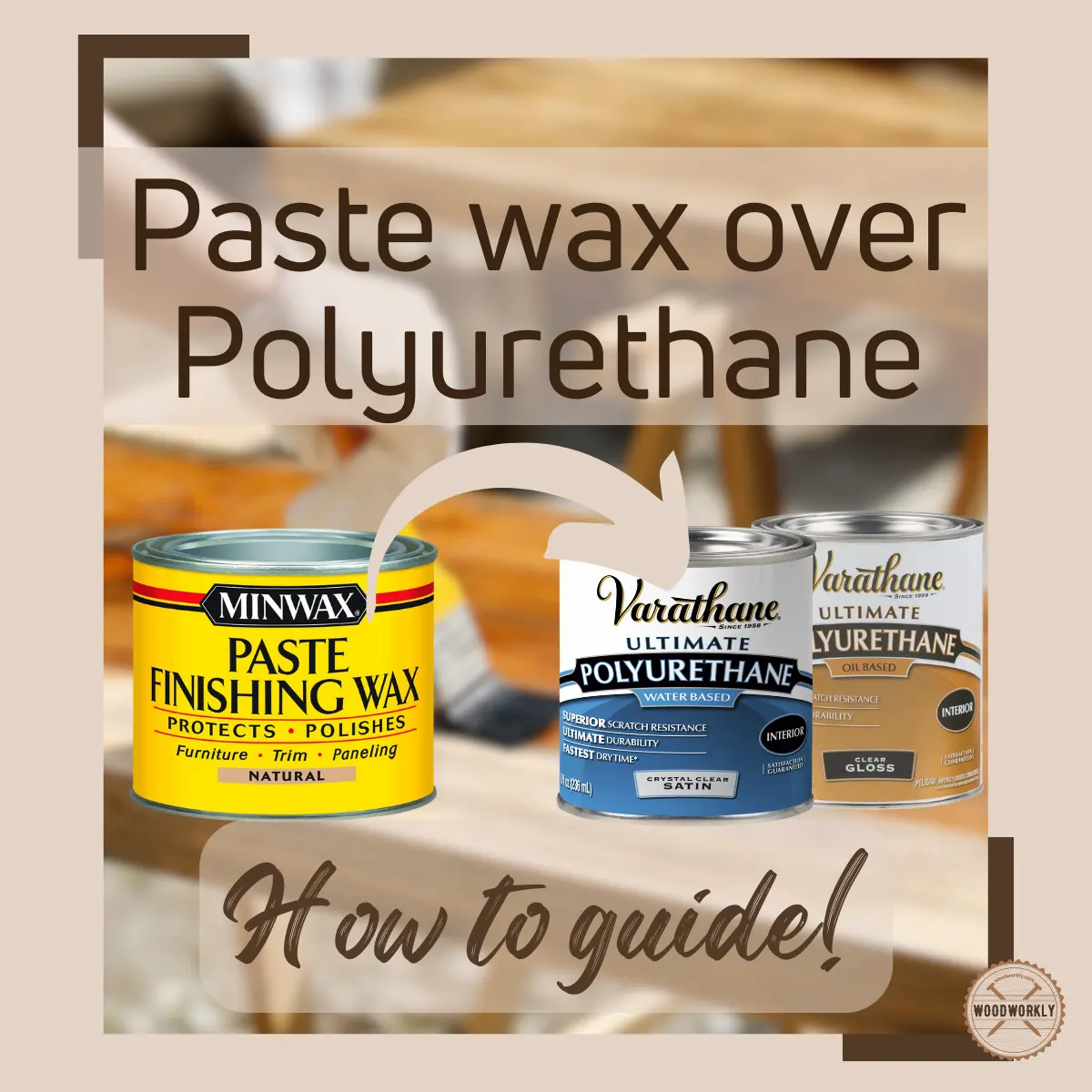
Still, aren’t you satisfied with your lovely wood furniture finish even after applying polyurethane?
Is it not shining enough? Or are you afraid of further scratches?
Well. You are in the right place! I’ll give you a solution with great trust with paste wax.
So, let’s find out, Can you use Paste wax over Polyurethane?
Yes, you can apply paste wax over polyurethane to enhance its shine and protect the surface. Clean the surface, apply a light coat of wax with a cloth or 0000 steel wool, let it dry for 10-15 minutes, and then buff it to shine. Repeat if necessary.
But, there’s a lot to know.

Here I‘ll discuss whether you can place a paste wax over polyurethane with relevant benefits and drawbacks. Besides, I’ll show you how to apply poly over the waxed surface as well.
So, stay connected to the end.
Let’s dive in.

Paste Wax and Polyurethane
Paste wax is a finishing product that acts as a protective barrier against moisture, stains, and some scratches on various surfaces, especially on wood, and is effective at polishing surfaces.
Polyurethane coating is very popular among woodworkers in the modern world since it can provide long-lasting and stronger protection to wood than waxing which was popular at the time before poly was introduced.
Paste wax is mostly an oil-based substance that has less ability to harden than polyurethane does.
Furthermore, make sure not to keep waxed furniture exposed to direct sunlight and heat, since those can soften the wax layer over time.
The sheen and buttery texture of the wax is going away with time, you need to reapply the wax after a few years.
Normally, for dining tables reapplication is required after 3-5 years of the first coat, and for coffee tables it is nearly 10 years.
However, people use both poly and wax on their wooden surfaces.
So, which serves the Best or what is the correct way?, Just keep reading!
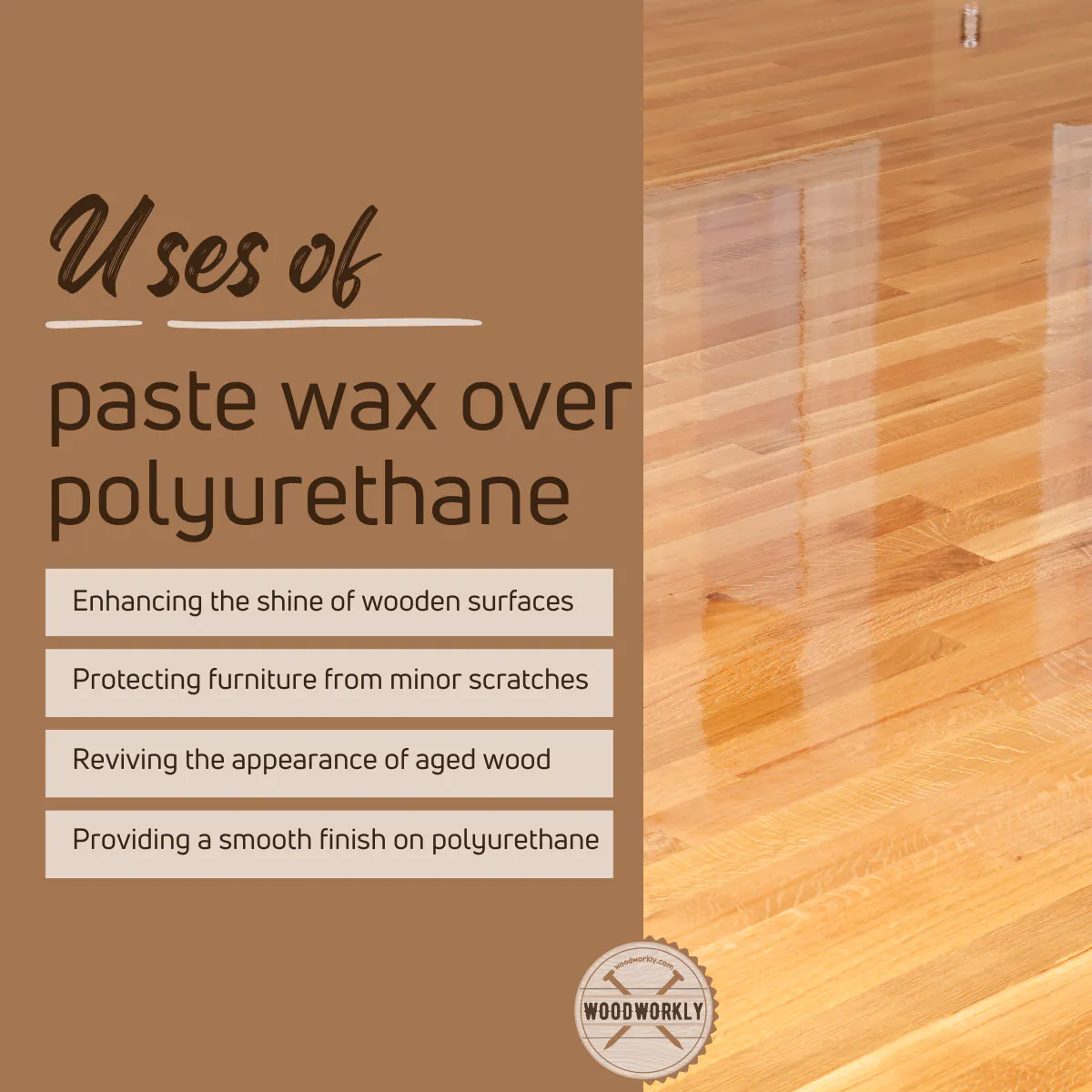
Paste Wax over Polyurethane or Polyurethane over Paste Wax?
Since wax acts as a polish, according to the general guidelines, first you should apply polyurethane in order to gain strong and long-lasting protection and then apply wax as the final coat for the wooden surface.
If you wish to apply a paste wax layer first and then poly, it won’t be successful.
The polyurethane’s adherence to the wax layer will be impaired, resulting in more work and both poly and wax will be wasted.
Therefore, the application of wax over the polyurethane is recommended by most experts.
If you need to apply polyurethane on a waxed surface, first you need to completely remove the wax layer.
For this, use the TSP (Trisodium phosphate) solution or mineral spirits, wipe it out, and then, apply polyurethane.
Protect yourself from harmful polyurethane fumes!
Wear a P-100-rated respirator mask, goggles, and gloves when using such chemicals, and do your work in a well-ventilated area.

How to Apply Paste Wax over Polyurethane?
Applying paste wax over polyurethane can add an extra layer of protection and provide a perfect, smooth, glossy finish to your furniture and woodworking project.
The complete process of applying paste wax over polyurethane will take approximately 10 hours.
Here are the steps of applying paste wax over polyurethane,
- Gather all materials and tools.
- Clean the surface
- Apply the paste wax
- Allow the paste wax to dry
- Buff the wax on the surface
- Repeat steps 3 and 4
Now, I’ll explain each step in detail.
1. Gather all Materials and Tools
Collect these materials before starting the process.
- Paste wax
- A soft brush
- Fine steel wool (0000) – Optional
- Clean, lint-free cloths
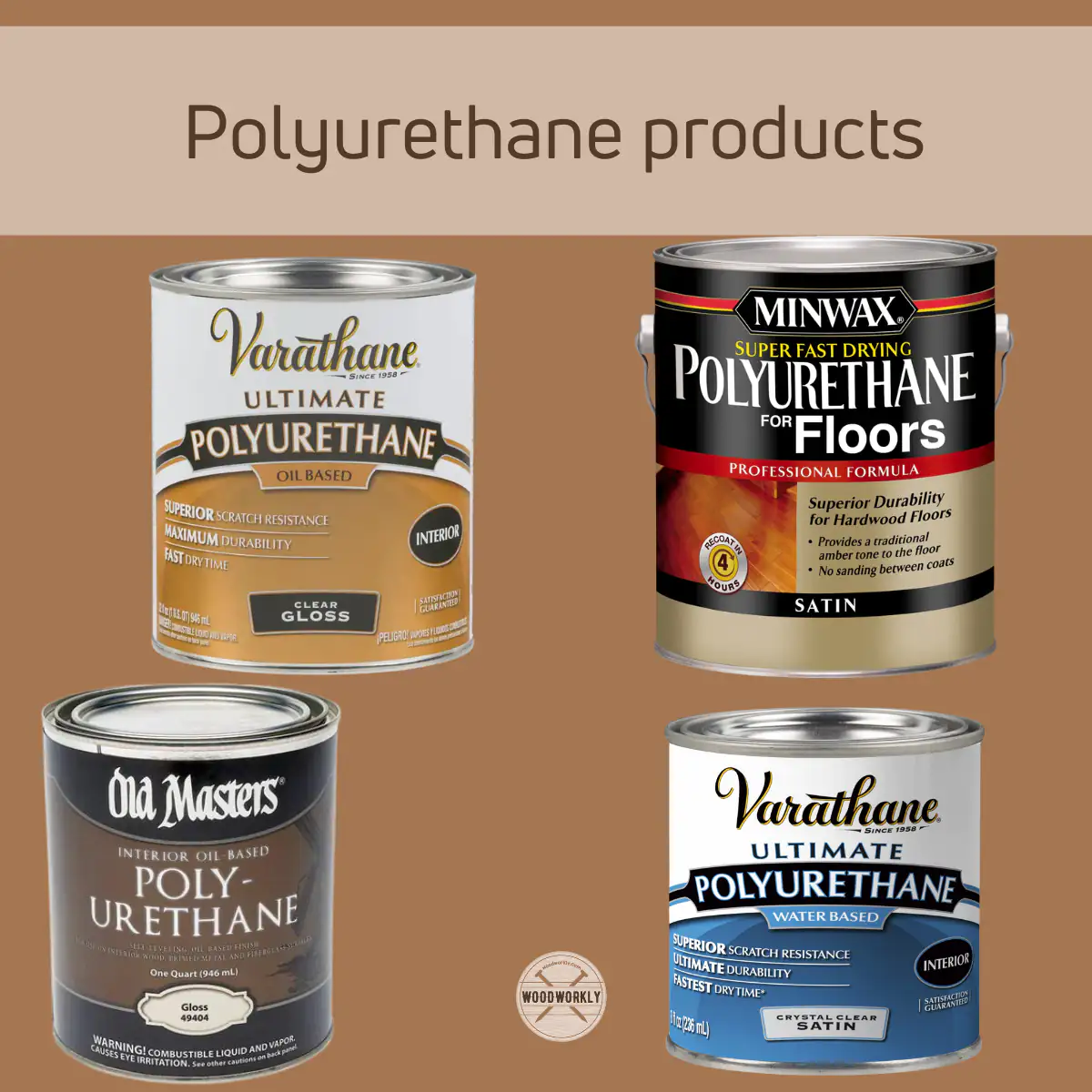
2. Clean the Surface
Make sure the surface is free of dust, dirt, and debris. For that, you can use a dry clean cloth to wipe gently or you can use a damp cloth as well.
If there is any stain, use oil soap to wash away them.
This will help the wax to adhere to the surface well. If there are any imperfections or rough spots on the polyurethane surface, use fine steel wool (0000) to lightly sand the surface.
But, apply in the direction of the wood grain.
3. Apply the Paste Wax
Take a clean cloth or a wax applicator and scoop up a small amount of wax. Then rub the wax on the surface in a circular motion until the film is gone.
Since cloth is used here as an applicator you have to put extra effort into it. Make sure to apply a thin layer of wax.
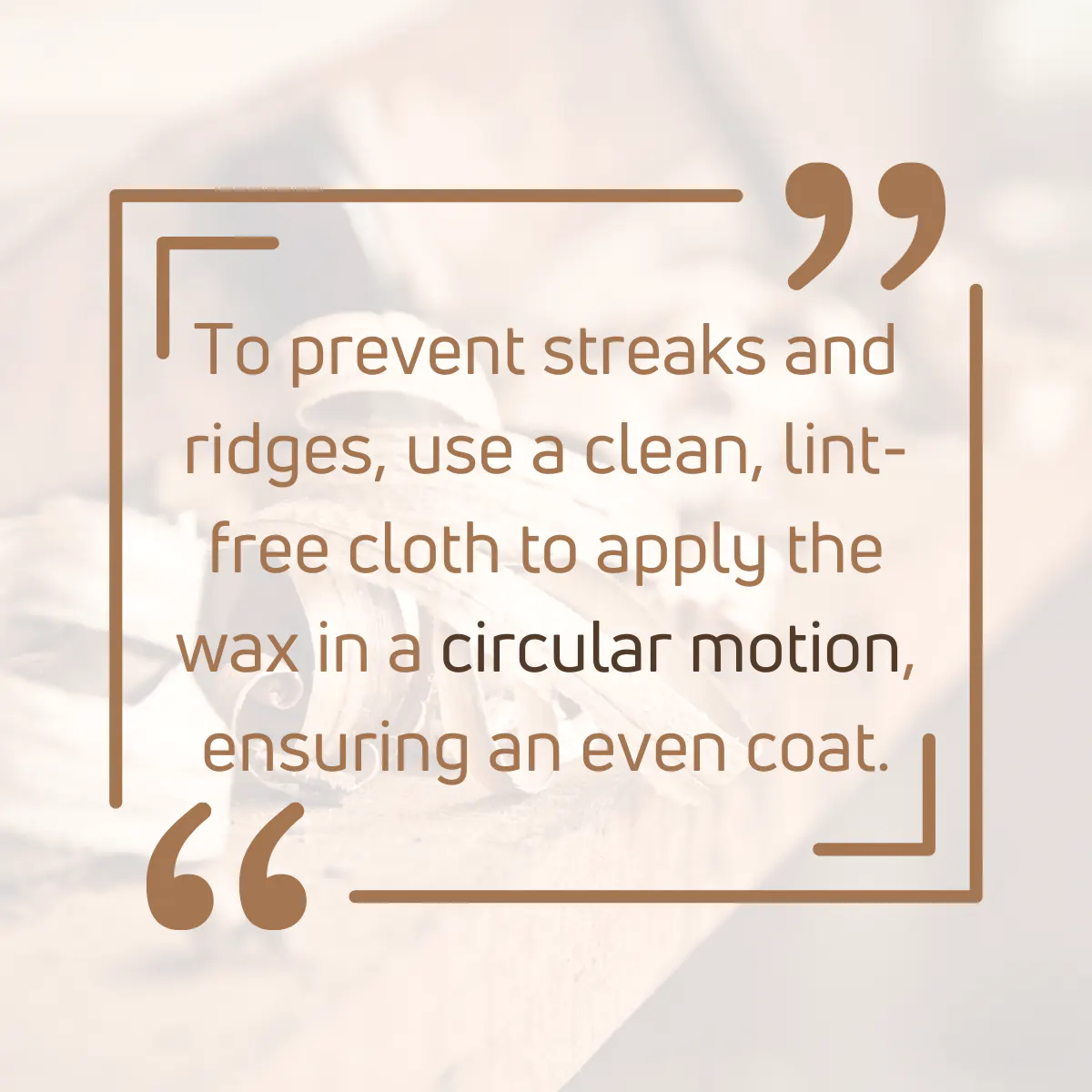
4. Allow the Paste Wax to Dry
Let it dry for 10-15 minutes. But it is better to follow the manufacturer’s recommended time.
5. Buff the Wax On the Surface
Once the surface is dried, buff the surface in a circular motion by using a clean, lint-free cloth, electric buffer, or a cotton diaper until your furniture gets a glossy shine.
You can use a floor buffer with a lambswool buffing pad to buff off the floor.
6. Apply Another Layer of Paste Wax and Buff It
If your wooden furniture isn’t shiny enough, apply another layer and buff it off to get the desired finish.
After the first coat, you need to keep the surface for eight hours, and then reapply a thin coat. Then, let it dry for 10-15 minutes and buff it off.
Avoid applying thick coats. Instead, apply many light coats and polish the surface progressively.
Waxed surfaces should be maintained periodically as they deteriorate in the presence of sunlight and heat.
The frequency of maintenance depends on the use.
For example, dining tables need to be polished after three to five years while coffee tables need to be treated after 10 or more years.

Now I’m going to share with you some tips that I’ve learned over the past years by applying paste wax over polyurethane for different woodworking projects.
These tips will help you to succeed in the project without making any mistakes.
Tips for Applying Paste Wax over Polyurethane
- No need to apply wax on polyurethane parallel to the direction of wood grains. You can quickly apply as you wish.
- Apply thin coats. Otherwise, it may take a long time to dry and may gain a sticky nature.
Read to know How Many Coats of Polyurethane should you apply? (Ultimate Guide!)
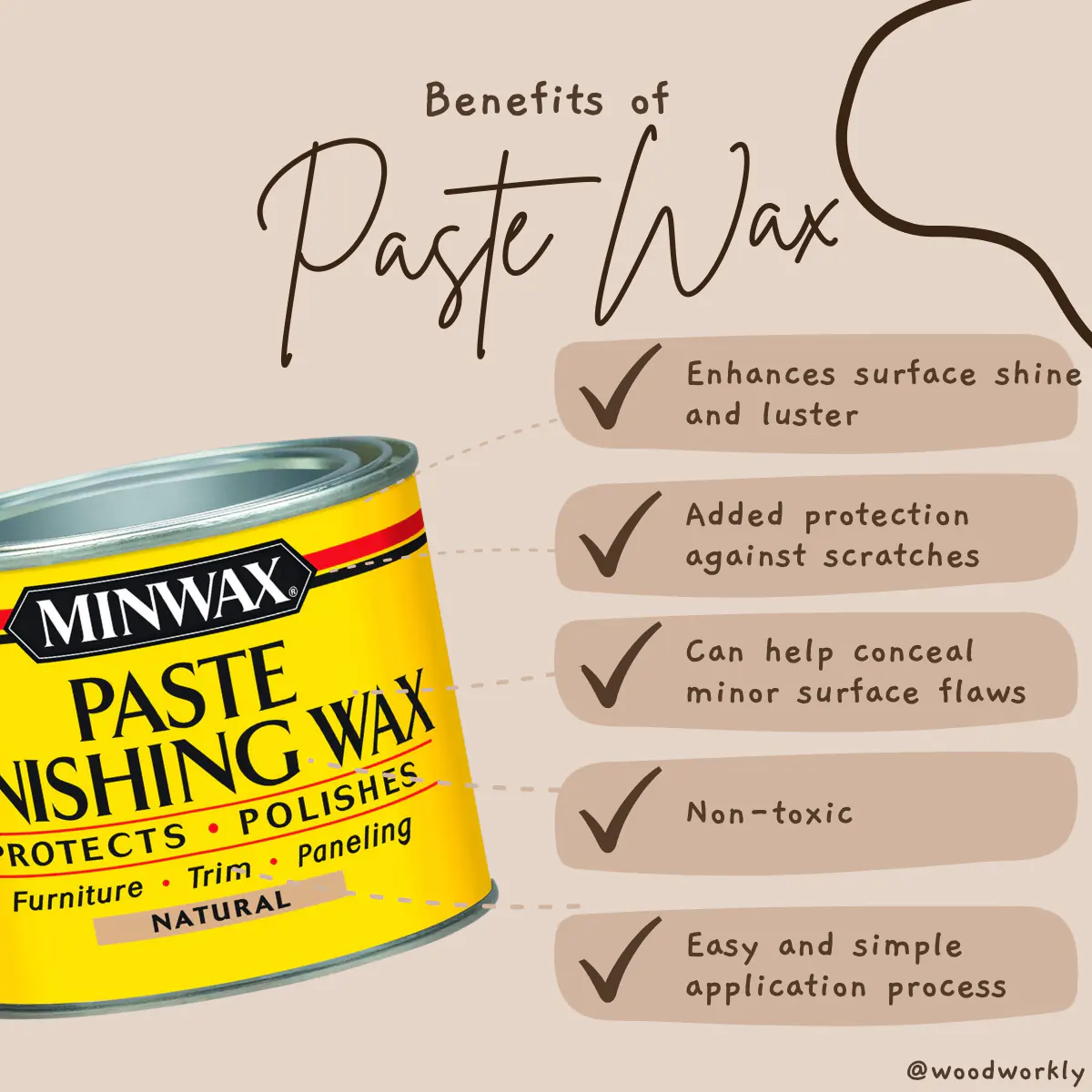
How Long Should Polyurethane Dry Before Applying Paste Wax?
Before starting the wax application you need to make sure the polyurethane has been completely dried.
A single coat of water-based polyurethane normally takes 6-12 hours to dry after application and for oil-based polyurethane, it takes approximately 24 hours.
So if you applied multiple coats, for the curing process you have to wait about a month.
Read to learn, How to fix polyurethane mistakes!
In addition to that, the drying time depends on the wood type, environmental condition, and condition of the wood surface.
So you need to be patient to get a long-lasting durable finish on your surface.
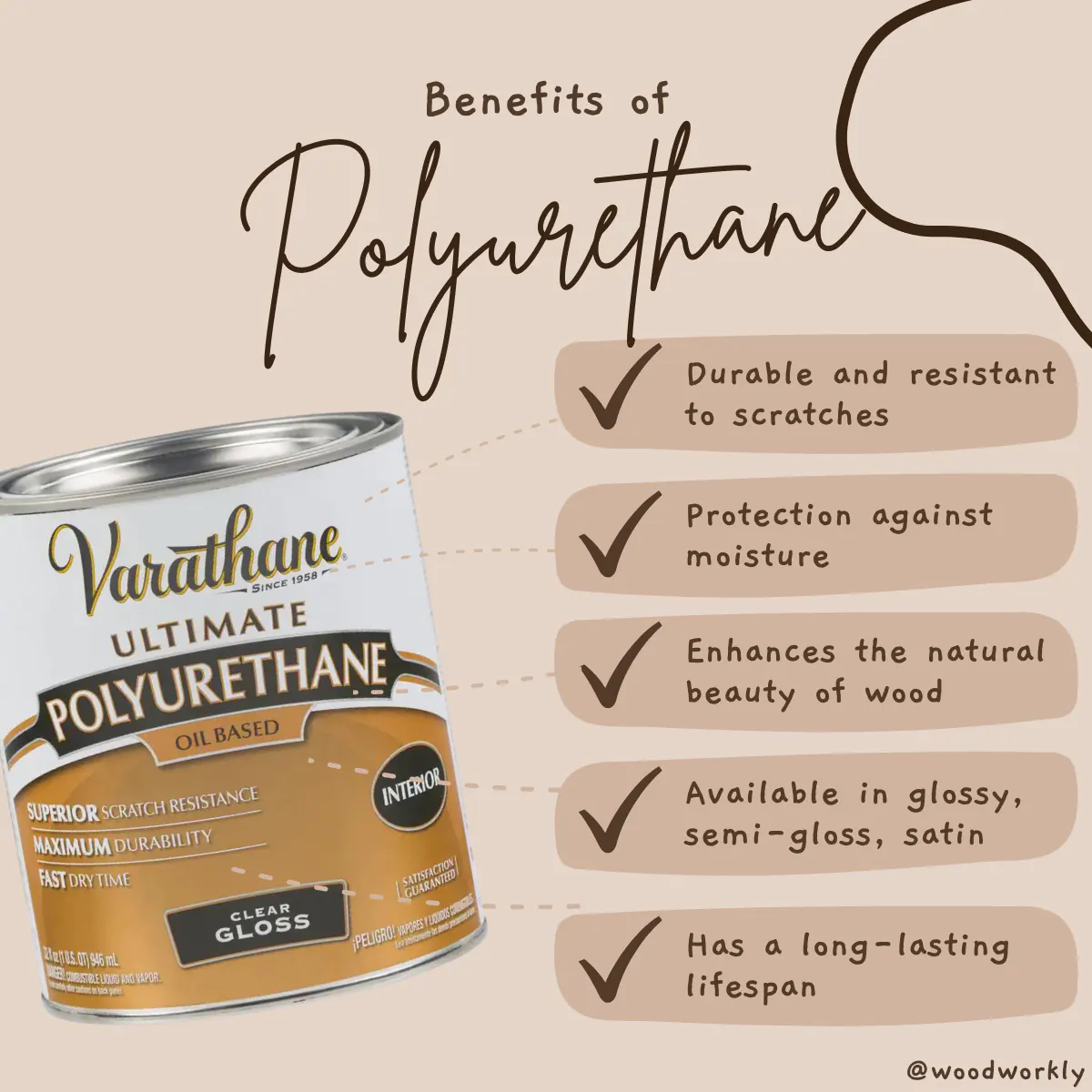
How Many Coats Of Polyurethane Apply Before Waxing?
Most woodworking professionals and experts recommend that three polyurethane coats are enough to apply a wax coat on the surface.
This is the maximum amount of poly layers recommended by the experts.
However, this depends on whether you use oil-based or water-based poly. But for the first coat, you need to mix poly with mineral spirit.
Read to know, Is Polyurethane Waterproof? Here’s the Truth!
Advantages and Disadvantages of Paste Wax
Undoubtedly, when properly applied paste wax can enhance the beauty of your furniture.
Not only that, it gives some other benefits to your furniture.
The benefits of the paste wax outweigh the drawbacks.
Benefits of Paste Wax
Enhanced Appearance
Wax can make your furniture more attractive by adding a natural, glossy shine.
Provide Protection
Wax can give protection against dust, dirt, moisture and other environmental contaminants as well as it can give extra protection against scratching.
Easy to apply
Waxing doesn’t require special instruments or extensive training. You can simply do it by yourself with a cloth or applicator pad.
Smooth finish
Since wax can remove imperfections, and scratches on the surface and due to the buffering process it can get a smooth even finish.
Non –Toxic
Do you show allergic conditions to chemical fumes? Then wax is the best option. Most of the wax products are less toxic, contain less Volatile Organic Compounds (VOC) and are environment friendly.
Aromatherapy Benefits
Most of the waxes don’t have an irritating smell. Waxes like Beeswax can emit a natural fragrance when applied.
It can make a pleasant environment in the case of waxed objects.
Preservation
Paste wax can slow down the aging process of wood by preventing wood from drying, cracking, and becoming brittle.
Versatility
Due to the versatility of paste wax, this can be used in a wide range of woods with different finishes like unfinished wood, painted or stained wood, as well as for softwoods and hardwoods.
Drawbacks of Paste Wax
Limited durability
Waxed furniture fades relatively quickly.
Furniture in high-traffic areas and areas with harsh environmental conditions are subjected to wear off the wax layer.
Damage by heat
In high-temperature conditions, paste wax can soften or melt. This may cause loss of the protective layer.
Regular Maintenance is required
To maintain the beauty of the surface, the paste wax needs to be applied more often than other finishes.
Not Ideal for High-Wear Areas
Since paste wax can’t provide sufficient protection against high humidity, it may not be suitable for outdoor wood surfaces.
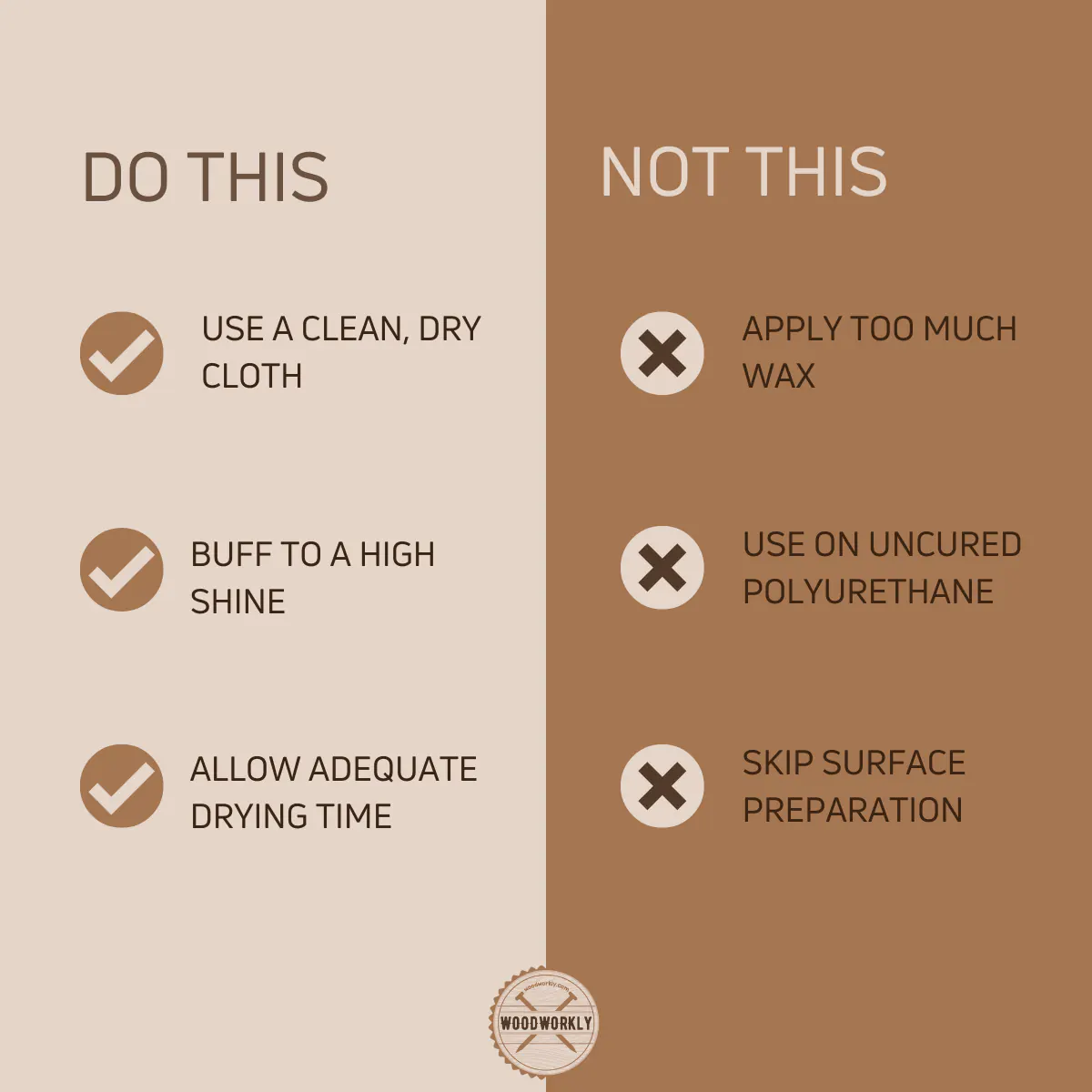
Waxing Polyurethane Floor Finishes
Already polyurethane-treated floors are strong and long-lasting.
But if you apply a paste wax layer on it to improve shine and appearance, dangerously the floor may become slippery.
Moreover, by the time it turns to dull and yellowish color. So you need to stripe the floor frequently.
Stripping was a difficult and time-consuming process.
Therefore, waxing polyurethane floor finishes isn’t recommended by experts.
How to Choose the Best Paste Wax for Wood?
The choice of the best wood wax depends on the type of wood that you are working with and your specific needs and personal preferences.
When selecting a wax product for your wood surface you need to consider the safety, ingredients, ease of application, price, and the size and coverage that you need to apply.
Some products may contain higher amounts that are harmful if inhaled or used around children and pets.
But there are products with less or free of volatile organic compounds that can be used even without wearing a mask.
Waxes include different compounds to gain durability, safety, and ease of application. You need to check the ingredients before buying according to your preference and safety.
Products with VOC and petroleum-based waxes have good protection; they are not safe. The products with natural ingredients are safe to use.
Most waxes contain oil that makes it easy to apply.
The price should be checked with the quantity since larger quantities require a higher price.
You need to check the quantity of the wax, the number of coats needed to apply depends on the coverage and the surface condition.
Here are some of the most popular commercial products that are widely being used by experts.
Furniture Clinic Traditional Wood Beeswax Polish
This type of wood contains natural beeswax and mineral spirits. Mineral spirits help to soften the wax allowing it to spread evenly and shine.
Furthermore, it dries quickly to give a long-lasting, clean, and shiny finish.
Minwax Paste Finish Wax
This is a highly popular brand used in the woodworking industry.
Most suitable to wood types where there is no rough polyurethane coat such as cabinets, doors, tables, and chairs. Contains mineral spirits and is thinner to soften the wax.
This product has a long drying time.
Howard Wax-It-All Food Grade Wax
As the name implies this wax can polish any wood as it contains beeswax, food-grade mineral oils, and carnauba wax.
Since this product doesn’t contain VOC, linseed oil, or silicone, it is safe to use.
Howard wax can prevent cracking and drying of wood and is suitable for both indoor and outdoor furniture.
Howard Citrus Shield Paste Wax
This product includes beeswax, Brazilian carnauba wax, orange oil, and surfactants while it doesn’t contain silicone or linseed oils.
Orange oil cleans the surface and gives a pleasant smell. Since this has UV protection ability, suitable for outdoor furniture as well.
Pipihua Beeswax Furniture Polish
This type also contains natural beeswax as well as orange oil, eucalyptus oil, and carnauba wax. Eco-friendly, non-toxic product with high affordability.
Congrats folks! Now you exactly know whether is it okay to apply paste wax over polyurethane and How to do that properly to get the maximum benefits.
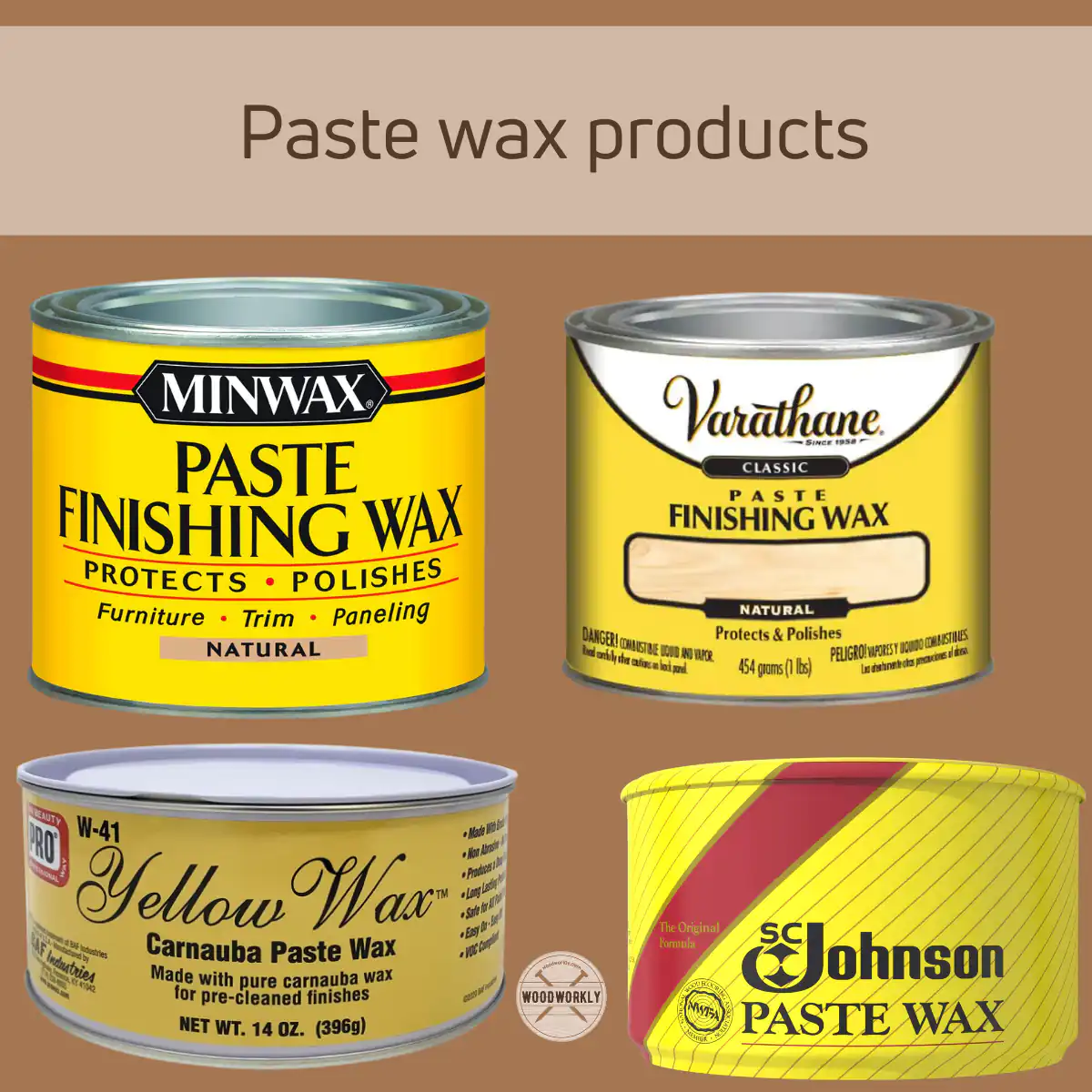
So, let’s answer some frequently asked questions.
FAQs
What are the Benefits of Applying Wax Over Polyurethane?
Applying wax over polyurethane can add a lustrous shine to your wood surfaces, help to conceal minor scratches, and provide an extra layer of protection against moisture. It is also less toxic compared to other finishes, making it a preferred choice for individuals sensitive to chemical fumes.
How Do I Prepare the Surface Before Waxing?
Before waxing, ensure that the surface is clean and free of dust. You might use a damp cloth for cleaning stained surfaces and oil soap can be employed for more stubborn stains, preparing the surface for a smooth wax application.
How Long Should I Wait Between Wax Coats?
After applying a light coat of wax, allow it to dry for 10-15 minutes before buffing. If adding multiple coats, wait four to eight hours between each coat to achieve the desired shine and finish without risking the appearance of ridges in the wax.
Can I Apply Polyurethane Over Wax?
It is generally advised against applying polyurethane over a waxed surface. If you wish to do so, first remove the wax layer using a TSP or spirit solution, followed by sanding the wood to prepare it for the polyurethane application to prevent repelling or additional work later.
Is it Necessary to Sand Polyurethane Before Applying Wax?
Sanding the polyurethane surface before applying wax is not mandatory but can be done to smooth out brush marks or nibs, thus enhancing the final appearance of the wax coat.
How to Maintain a Wax Finish on My Floor?
Maintaining a wax finish requires periodic rewaxing, especially when the surface starts to appear dull. However, be cautious with the frequency of rewaxing as it may turn yellow and dull over time, necessitating a tedious stripping process before refinishing.
What are the Drawbacks of Using Wax as a Finish?
Although wax is simple to apply and has a pleasant smell, it is less durable compared to other finishes and not suitable for areas with high moisture content. Moreover, it can be damaged by heat and requires periodic maintenance to maintain its lustre.
Can Wax be Used as a Solo Finish on Wood Surfaces?
While wax can be used as a solo finish, it is often better utilized to enhance and protect another type of wood stain finishes like polyurethane, helping to mask minor flaws, especially on darker surfaces, and imparting a low-luster finish that is visually pleasing.
Did I cover all you wanted to know about the Paste Wax Over Polyurethane?
In this article I’ve deeply explored can you put paste wax over polyurethane and how to do that with all the tips and techniques that I’ve learned with experience.
You can apply paste wax over the completely cured polyurethane surface. But this isn’t necessary, even though wax can give wear protection. However, over time, wax may turn into a yellowish color which will eventually flake off. Spare away applying wax over wooden floors since it makes them slippery.
Furthermore, I’ve answered some frequently asked questions as well.
Hope you learned everything you wanted to know about, paste wax over polyurethane.
Now, it’s time to practice the things you’ve learned and make an excellent finishing coat over your loved furniture. Good luck with your work!